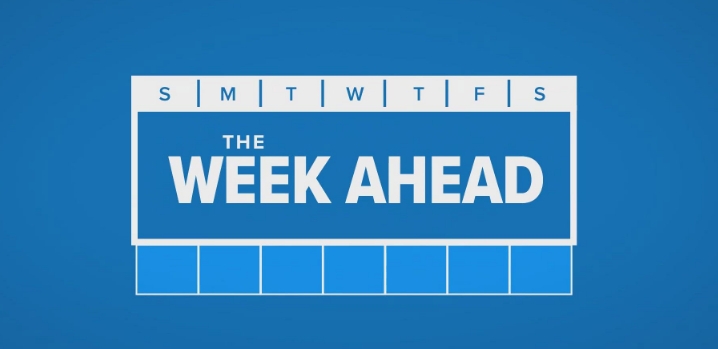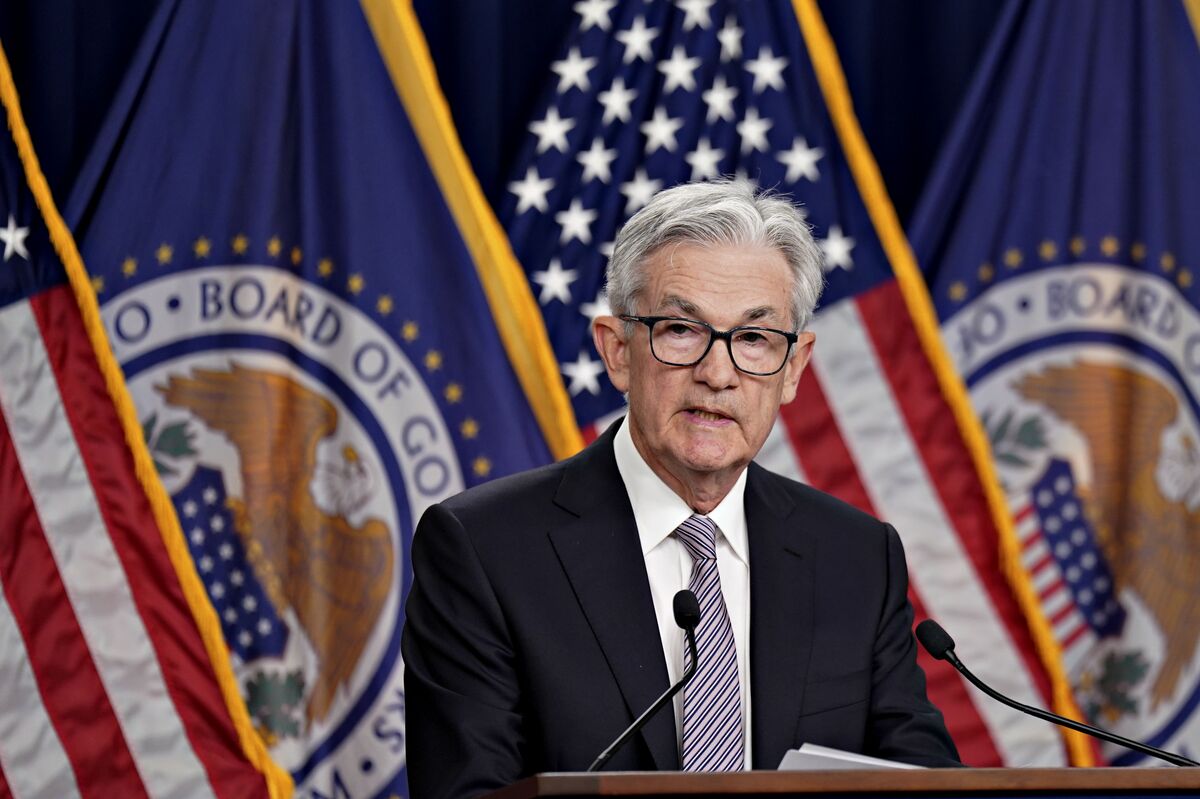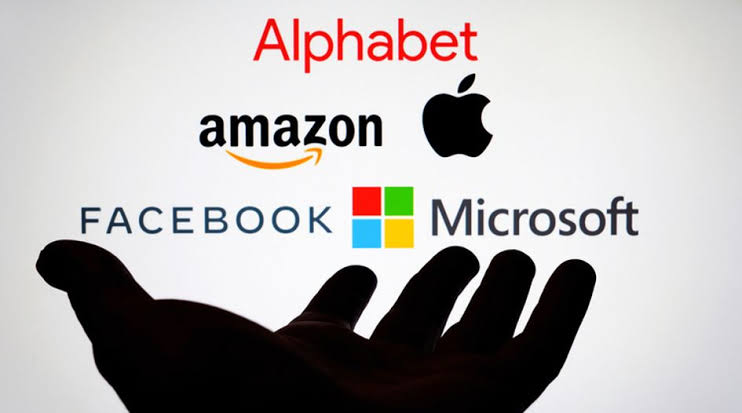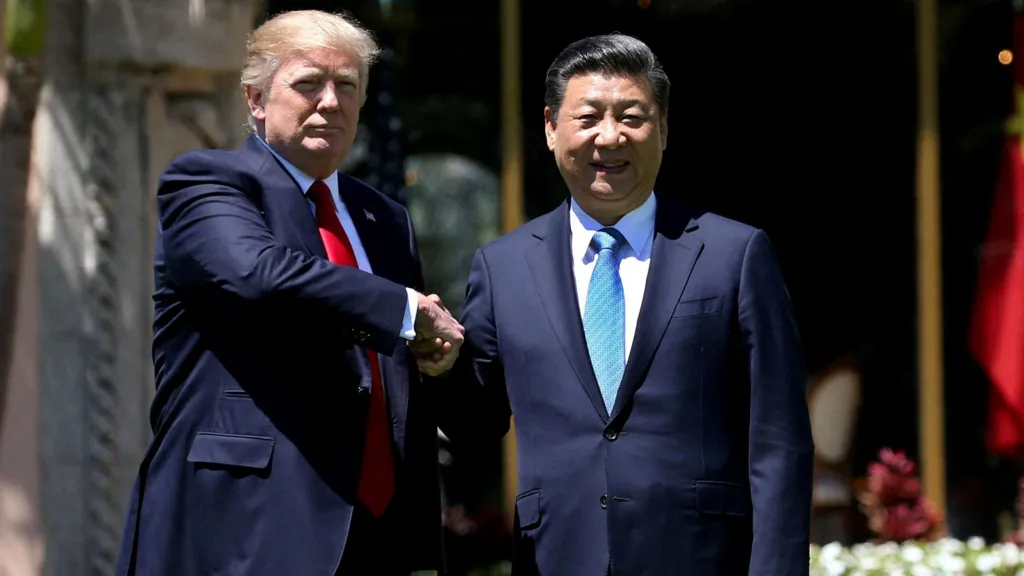Big Tech Earnings, Fed Rate Cut, and Trump-Xi Showdown: The Packed Week with Potential Pivot Point for the World's Trade Tensions
Wall Street enters a pivotal stretch, where the Federal Reserve's interest rate decision collides with a barrage of Big Tech earnings and a high-profile meeting between President Trump and China&

Wall Street enters a pivotal stretch, where the Federal Reserve's interest rate decision collides with a barrage of Big Tech earnings and a high-profile meeting between President Trump and China's Xi Jinping.
Stocks sealed last week at all-time highs, buoyed by a cooler-than-expected September CPI report that reinforced the Fed's easing path. Yet beneath the surface, a government shutdown lingers, delaying key data like jobs numbers, while trade tensions simmer with rare earth export curbs from China and U.S. sanctions on Russian oil giants. This confluence of events could either extend the market's 36% rally from April lows or introduce the volatility traders have long anticipated.
The S&P 500's 15% year-to-date gain masks a concentrated surge, driven largely by the so-called Magnificent Seven—Apple, Microsoft, Amazon, Alphabet, Meta, and their peers. As earnings season hits its peak, more than 80% of reporting companies have topped estimates on both revenue and profits, with overall growth exceeding 10% year-over-year. But the real test lies ahead: can these tech titans sustain the AI-fueled optimism that's propped up valuations, or will narrowing growth spreads signal a fade?
The Fed's Delicate Balancing Act

Jerome Powell's Federal Open Market Committee convenes Wednesday amid a data blackout, courtesy of the ongoing government shutdown—now the second-longest on record at over 21 days, eclipsed only by 2018's 35-day ordeal.
Furloughed workers missed their first paychecks last week, tying shutdown politics directly to labor market strains. Without September's jobs report, the Fed leans on private signals: ADP payrolls dipping negative in three of the last four months, ISM gauges slipping, and state unemployment claims hinting at a market "at best holding steady and at worst slightly deteriorating," as Bank of America analysts put it.
Inflation, once the Fed's arch-nemesis, has receded. September's CPI rose 3% annually, down a tick from expectations but up slightly from August's 2.9%. Core CPI, excluding food and energy, cooled to 3% from 3.1%, with a 0.2% monthly gain after two 0.3% bumps. This "lighter-than-expected" print, per Bankrate's Stephen Kates, bolsters confidence for further cuts. Traders price a 97.6% chance of a quarter-point trim, lowering the target range to 3.75%-4.00% from 4.00%-4.25%.
This isn't emergency stimulus but prudent insurance against labor weakness. The Fed's September cut marked a shift from inflation-fighting to risk management, aiming for a "neutral" stance. Forecasts suggest only modest easing into 2026, but markets bake in a full percentage point more, highlighting the perennial tug-of-war. Liquidity remains key: bank reserves hover near $3 trillion, or 10% of GDP—safely above 2019's repo crisis threshold of 7%. Quantitative tightening may wind down, with Treasury roll-offs ending and mortgage-backed securities fading organically, keeping reserves above 9% of GDP.
Yields reflect this calm: two-year Treasuries near 3.5%, tens around 4%. Bonds feel like a haven, not a hazard. Tuesday's Conference Board consumer confidence reading, expected at 93.8 versus 94.8 prior, could offer fresh clues on household sentiment amid these crosscurrents.
Earnings Onslaught: Big Tech Under the Microscope

This week's corporate calendar is earnings season's crescendo, dubbed the "Super Bowl" by traders for its density and drama.
Microsoft, Amazon, Apple, Alphabet, and Meta headline, their results scrutinized for AI momentum. Combined, these firms shoulder outsized S&P weight, with expected earnings growth of 16.6%—double the broader market's 8.1%. Investors demand not just beats but forward guidance affirming demand, cost controls, and innovation pipelines. A single misstep could ripple through the tape, given the rally's reliance on this cohort.
Beyond tech, energy majors dominate: Exxon Mobil, Chevron, Shell, and TotalEnergies report amid elevated crude prices post-U.S. sanctions on Russia's Rosneft and Lukoil. These moves aim to pressure Vladimir Putin on Ukraine but risk higher pump prices as refiners pass costs along. UnitedHealth Group, Verizon, and Southern Company add healthcare, telecom, and utility perspectives, while Visa, Mastercard, Eli Lilly, and Merck flesh out payments and pharma.
Monday kicks off with Welltower, Southern Copper, Cadence Design Systems, Waste Management, NXP Semiconductors, Keurig Dr Pepper, and The Hartford. Tuesday brings Visa, UnitedHealth, HSBC, NextEra Energy, Booking Holdings, American Tower, Royal Caribbean, Sherwin-Williams, Mondelez, Corning, UPS, PayPal, MSCI, Sysco, and Bloom Energy.
Wednesday features Microsoft, Alphabet, Meta, Caterpillar, ServiceNow, Boeing, Verizon, KLA, Banco Santander, UBS, ADP, CVS, Starbucks, Equinix, Agnico Eagle, Fiserv, American Electric Power, Equinor, Chipotle, Phillips 66, eBay, Entergy, Carvana, Prudential, Kraft Heinz, and American Water Works.
Thursday's lineup includes Apple, Amazon, Eli Lilly, Mastercard, Merck, Shell, Gilead, S&P Global, Stryker, TotalEnergies, Anheuser-Busch Inbev, Comcast, Southern Company, Intercontinental Exchange, Roblox, Bristol Myers Squibb, Coinbase, MicroStrategy, Cigna, Cloudflare, Motorola, Cheniere Energy, Reddit, Hershey, Estée Lauder, Restaurant Brands, Blue Owl Capital, Fox, Carlyle Group, Zillow, and GoDaddy. Friday wraps with Exxon, AbbVie, Chevron, Linde, Colgate-Palmolive, Canadian National Railway, Dominion Energy, Imperial Oil, Charter Communications, Cenovus Energy, Cboe Global Markets, T. Rowe Price, and Piper Sandler.
Trade Tensions and Geopolitical Jitters

Thursday's Trump-Xi meeting at the APEC Summit in South Korea looms as a potential circuit breaker—or accelerant—in the U.S.-China trade saga. Confirmed last week, the sit-down follows China's rare earth export limits, forcing a U.S. scramble for domestic alternatives, and Beijing's near-halt on American soybean buys, exacerbating farmers' financial woes. The American Soybean Association called these developments "deeply disappointing," underscoring agriculture's pain.
U.S. sanctions on Russian oil firms add global friction, lifting crude in its biggest jump in four months. If sustained, this could reverse months of gas price relief. Goldman Sachs warns companies may pass 70% of tariff costs to consumers, inflating everyday goods. Even a constructive Trump-Xi dialogue might not dispel uncertainty, as Macquarie's Thierry Wizman notes: "We're far from convinced that there will be an important enough 'deal' to relieve traders of uncertainty."
Economic prints punctuate the week.
Monday: durable goods (-0.1% expected) and Dallas Fed manufacturing (-8.7 prior).
Tuesday: FHFA house prices (-0.1% prior), Richmond Fed manufacturing (-17 prior), Conference Board confidence, and Dallas Fed services (-5.6 prior).
Wednesday: MBA mortgages (-0.3% prior), wholesale inventories (-0.2% expected), advance goods trade (-$90B expected), retail inventories (0.0% prior), pending home sales (4% prior monthly, 0.5% yearly), and the FOMC decision.
Thursday: jobless claims, continuing claims, personal consumption (2.5% prior), GDP (3% expected annualized), GDP price index (2.1% prior), and PCE price index (2.6% prior quarterly).
Friday: personal income (0.4% expected), spending (0.4% expected), real spending (0.4% prior), PCE indices (various), employment cost index (0.9% prior), and Chicago PMI (42 expected).
Euphoria Meets Caution
The rally's resilience—climbing without a shakeout—breeds unease. Traders eye this week for proof corporate America can navigate static. The dollar, lifted by data delays, may weaken post-cut, with EUR/USD targeting 1.1850 and USD/JPY the high-140s. Positioning is cleaner, expectations dovish; softer jobs and inflation could accelerate the slide.
In this gauntlet, stability trumps spectacle. The Fed stabilizes, earnings affirm, and trade talks could ease—or ignite. Investors brace for a week that could extend the climb or force a reckoning, all while the shutdown's shadow reminds: in markets, as in politics, uncertainty cuts both ways.
Disclaimer: The views in this article are from the original Creator and do not represent the views or position of Hawk Insight. The content of the article is for reference, communication and learning only, and does not constitute investment advice. If it involves copyright issues, please contact us for deletion.